 Hello, gentle readers, and welcome to the RPG Reload, a weekly feature where I take a look back at a previously released iOS RPG to do a little reflection, reconsideration, and to perhaps dig in directions that are outside the scope of a regular review. I cover RPGs of all kinds here, but even though I try to cover as many bases as possible, I’m still just one person and prone to potential blind spots. That’s where you come in, my friends. Once per month, I’ll be playing an RPG selected by you nice people, as voted in the comments of these articles and in our RPG Reload Club thread in the TouchArcade forums. Yes, I’ll have to play whatever the cruel majority decides and write a whole bunch of words about it, so please, go easy on the Kemco games. I’m happy to announce that the subject of our very first Reader’s Choice RPG Reload is none other than The Quest Gold ($7.99)! Please look forward to that one in next week’s article.
Hello, gentle readers, and welcome to the RPG Reload, a weekly feature where I take a look back at a previously released iOS RPG to do a little reflection, reconsideration, and to perhaps dig in directions that are outside the scope of a regular review. I cover RPGs of all kinds here, but even though I try to cover as many bases as possible, I’m still just one person and prone to potential blind spots. That’s where you come in, my friends. Once per month, I’ll be playing an RPG selected by you nice people, as voted in the comments of these articles and in our RPG Reload Club thread in the TouchArcade forums. Yes, I’ll have to play whatever the cruel majority decides and write a whole bunch of words about it, so please, go easy on the Kemco games. I’m happy to announce that the subject of our very first Reader’s Choice RPG Reload is none other than The Quest Gold ($7.99)! Please look forward to that one in next week’s article.
This week, I thought we’d change things up a bit from the Square-Enix games I covered in the last two articles. I happened to notice that the WRPG classic The Bard’s Tale was released somewhere around this time of the year in 1985, so what better time to talk about it? You can find the original The Bard’s Tale, along with all of its sequels, in the App Store release of the 2004 game, The Bard’s Tale ($2.99). If you’re into dungeon crawls, it’s kind of an insane value, as you get three excellent classics and one flawed but charming action RPG reimagining. We may get to those other titles someday, but for this article, we’re just going to be focusing on the game that initially released as Tales of the Unknown: Volume 1 – The Bard’s Tale. It was the start of what presumably was meant to be a series that focused on a different character with each volume had its popularity not veered it onto another course, even if only in name.
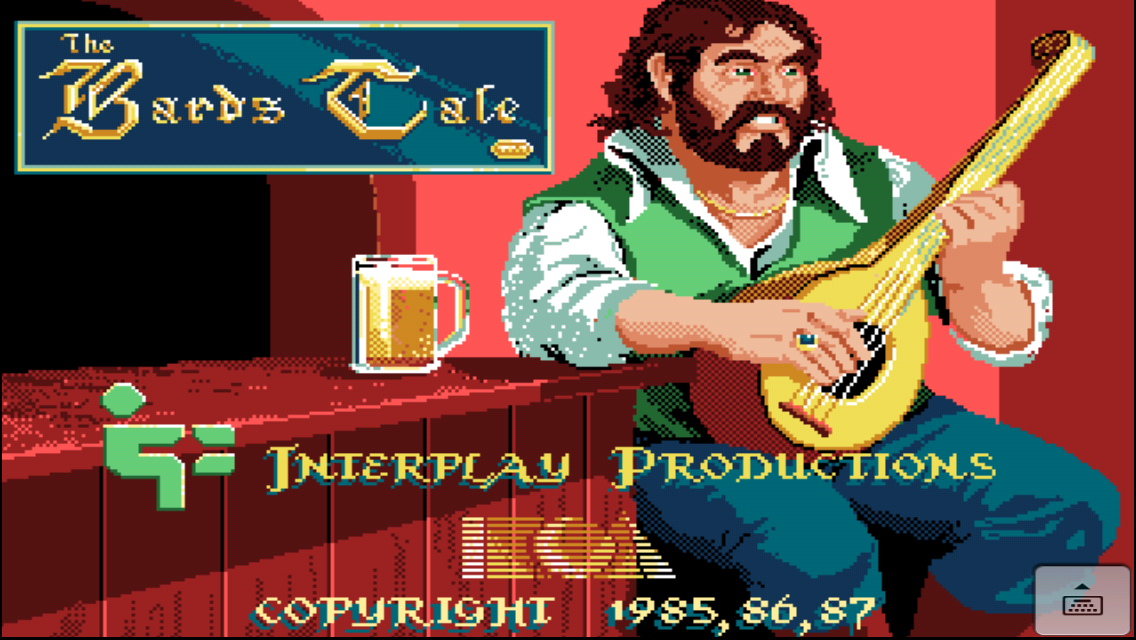
It’s largely forgotten now, but there was a time when The Bard’s Tale was at the top of the RPG world. By 1985, both Ultima and Wizardry were well-established hit franchises with three titles each under their belts and more than a few clones nipping at their heels. Ultima was soon to knock one out of the park with Ultima IV, but Wizardry was smack in the middle of its lost years, with the fourth installment meeting delay after delay. There was demand and opportunity for someone to fill the void, and upstart developer Interplay did just that with The Bard’s Tale. At its core, it wasn’t terribly different from Wizardry, but the devil is in the details, and that was where the game proved itself, winning a massive audience for the time and stealing a great deal of its inspiration’s thunder.
Its beautiful color graphics instantly set it apart from the drab and dark Wizardry games. Instead of having the game’s town take the form of a simple menu in Wizardry style, The Bard’s Tale‘s Skara Brae is basically the game’s first dungeon in and of itself, with tons of doors to kick down and deadly enemies around every corner. The game has multiple smaller dungeons instead of one big one, giving the feeling of a much bigger adventure even if the actual square footage wasn’t much larger. Then there’s the bard, that wonderful gift to the genre that remains with us to this day. While Ultima 3 had a bard-like character class called a lark, it was simply a variation on a wizard. The bard in The Bard’s Tale has his own unique set of skills and proves an indispensable asset to any party. On top of his practical uses, when you play one of his magical tunes outside of battle, you’ve suddenly given yourself some nice background music for your adventure. It’s a little charming flourish that helped set the game apart.
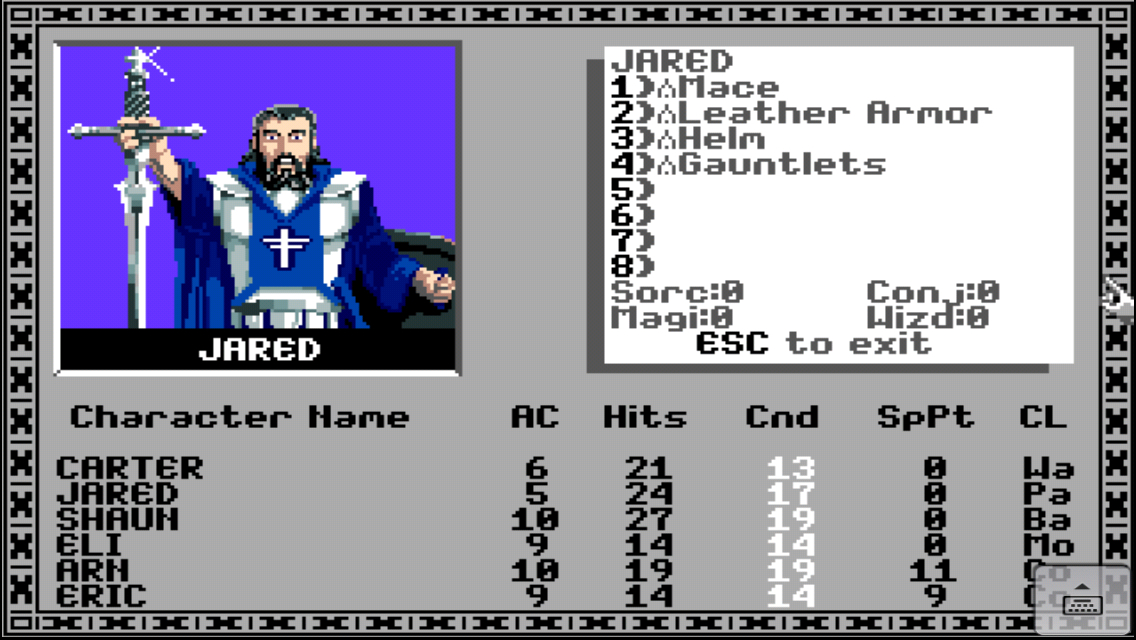
It’s a bit hard to see it looking at the game with modern sensibilities, but it was also a much more approachable game than Wizardry. That series had been stacking its difficulty up higher and higher with each installment, forcing you to import your characters at each step and expecting you to be fully aware of its previous tricks. For diehard fans, that was great, but for anyone coming in fresh, it was a bit of a nightmare. By comparison, The Bard’s Tale was positively lenient. Of course, we can’t forget the final piece of the puzzle in the success of the game. While Wizardry was mostly restricted to Apple II and DOS computers at the time, The Bard’s Tale was released on just about every popular home computer platform. My first experience with it was on the Commodore 64, and having not played Wizardry yet, it blew me away. The version we’re looking at today is an emulated version of the Apple IIGS version, which obviously looks and sounds amazing compared to that C64 release.
Before I go into my personal experiences with revisiting this game, I think it’s important to note that this game is 29 years old. In game years, that might as well be a million. If you bring your 2014 brain to this game, you are going to have a very, very unpleasant time. I know because that’s exactly what I did at first. I actually had myself in a bit of a fret, since I had already dropped the hint into my completed Chrono Trigger ($9.99) Reload, so I couldn’t exactly back out on you guys. You see, this early on in the genre, things were still very much based around Dungeons & Dragons rules, and in the D&D rules of the time, first level characters were extremely fragile and leveling up took a long time unless you had a generous Dungeon Master. I know plenty of people who never played with first level characters, instead getting a grant from the DM to start off at a higher level so they don’t get taken out in one bad fight with an orc. Well, you can’t haggle with the DM in The Bard’s Tale, so you’re just going to have to take your lumps and like it.

Boy, did I take some lumps. My memories of the game were pretty vague, and the once-familiar Skara Brae layout was a confusing labyrinth right from the get-go. After putting together my party, I took a few tentative steps out, opened a few doors, and was killed in a matter of minutes by a pack of roving mad dogs. Well, okay, let’s reload and start again. This time I won a battle against a few kobolds, but on my way back to the guild, a group of barbarians ambushed me and I was again left with little option but to restart. My 2014 thinking was clearly getting me nowhere, so I dug into a bit of material to help me get back into that 1985 way of thinking. My mistake was in setting exploring the first dungeon as my goal. No, the first step in The Bard’s Tale is simply surviving to level two, and it’s probably the most difficult part of the game.
To do this, you have to eschew certain ideas and habits you might have from newer games. For example, when creating your initial party, you’re in all likelihood not putting together the party you’ll be using for the whole game. Rather, you’re putting together a party that will help certain key members survive to higher levels so they can help others climb up with their new-found power. To that end, it’s a smart idea to keep a warrior in front to absorb hits. No matter which classes you choose, you won’t have access to any healing magic or items, and healing at a temple isn’t cheap, so sooner or later, that warrior’s going to fall. Since resurrecting dead characters is prohibitively expensive, the smartest thing to do is to strip that warrior’s corpse, chuck the body in the dumpster and create a new one. As an added bonus, the new guy will come with some money that you can add to your stockpile. It’s a ghastly process, but it works. Should any of your important party members die, you’re probably better off resetting.
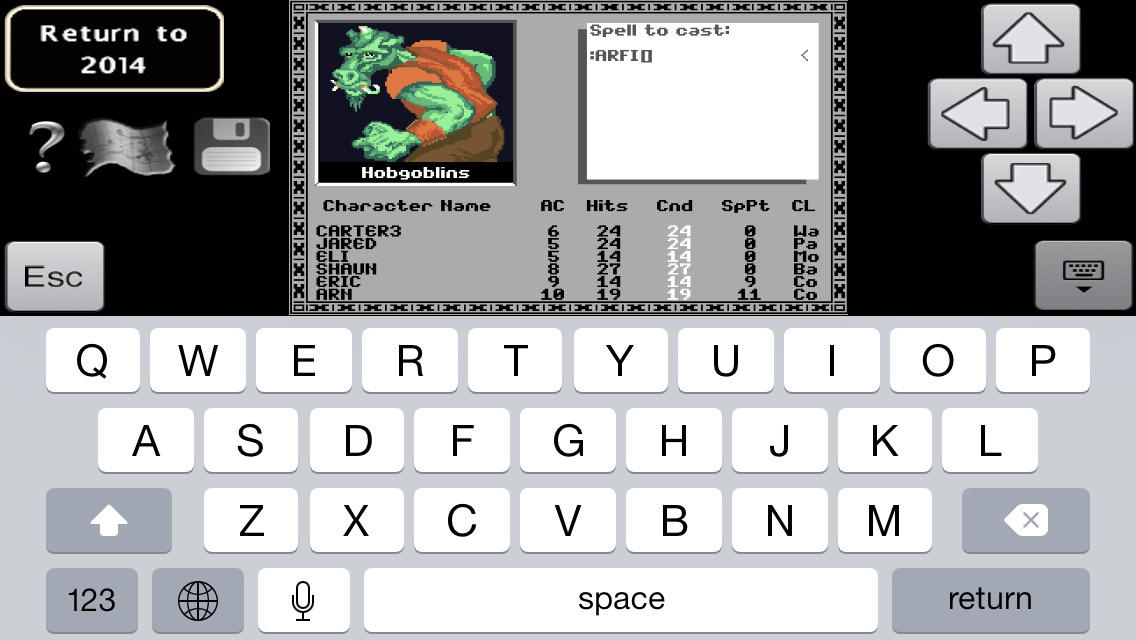
It’s a slow road to that second level, especially since even in the safest place, Skara Brae in the daytime, many battles are going to go badly for you. Another habit must be broken here for some, because in this game, you’re probably going to be running from more than half of the battles in the early going. You’ll probably have all of the best gear the shop sells before too long, but after that, you’re going to have grind very carefully until your front-line fighters get beefy enough to survive strong attacks and your casters get some good magic to support you. The legitimate danger in the early portions of the game keeps the combat from getting too tiresome, but it’s unsafe to venture too far away from the game’s sole save point, the Guild, so while the combat is always thrilling, the parts between can get pretty dull.
Once you’ve reached a certain level with your party, this reverses, with the combat being almost trivial thanks to high-level group attack spells, and the exploration requiring your full attention. If you’re using maps, whether your own or someone else’s, and taking notes, it’s not particularly difficult to make your way through the game’s dungeons. You will have to stop and grind here and there, and conserving spell points is always an issue, but there’s no question that the challenge in this game is extremely front-loaded. Of course, that’s pretty typical for RPGs of this vintage, so it’s hard to judge The Bard’s Tale too harshly in hindsight. The game does offer you quite a bit of freedom, with entire dungeons being skippable if you know the information contained within, and there are a lot of winning party setups as long as you remember to bring the magic-users.
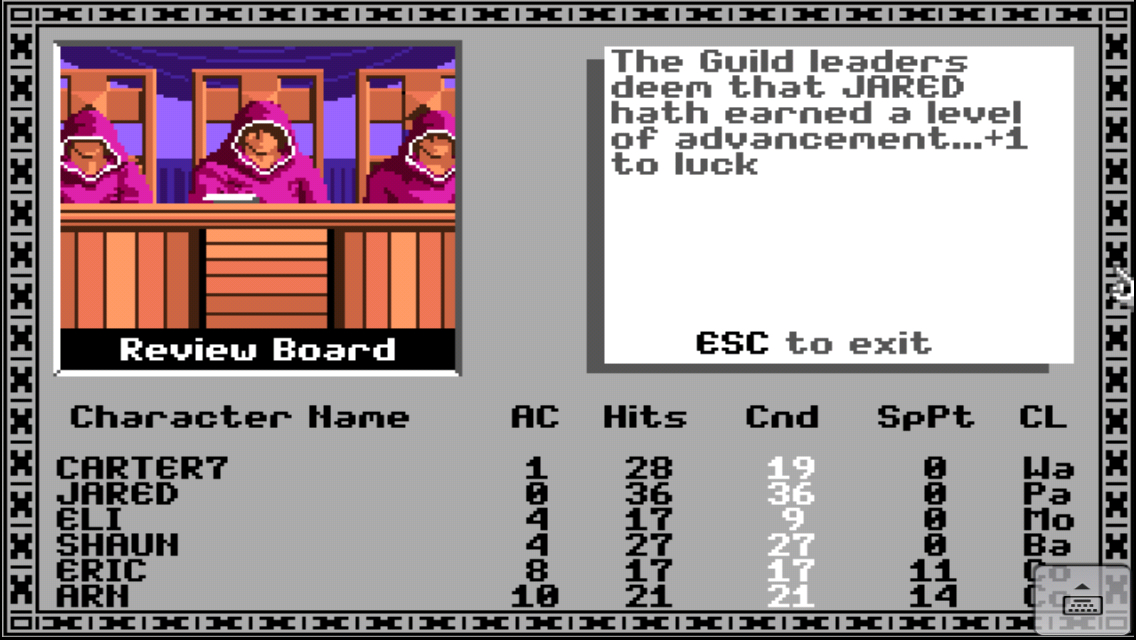
Technically, when you save your game, it’s not even saving the game world itself, but rather your characters and their inventory. Much of the game’s progress is contained in your own actual experiences. This, of course, makes the elements outside of leveling up very easy to cheat in today’s connected world. It’s just another way that The Bard’s Tale is very much a product of its time. This also manifests in the game’s magic system, which requires you to enter in a four-letter magic word every time you want to cast a spell. Where are the words? In the manual, of course, the trusty low-tech anti-piracy measure that thwarted many a young gamer. In this version, you can bring up the manual anytime, but it’s definitely irritating when you don’t have a paper copy in front of you, so you might want to write a list on paper. Having to exit the game at a particular location to save is also a very odd choice that probably wouldn’t happen nowadays.
That said, there are still games in the same style of The Bard’s Tale being made today, particularly since the Wizardry clone is still alive and well in Japan. The most successful on-going series is probably Atlus’s Etrian Odyssey on Nintendo handhelds, which is up to five installments with a sixth on the way. I think it’s kind of telling that those games are getting easier with each installment. People like plumbing the depths of dungeons, it seems, but few like losing significant progress from a bad roll of the dice. Personally, I can definitely understand that, but at the same time, my visit back to the world of 1985 reminded me just how exciting genuine threat and consequences can be in an RPG. Michael Cranford and the rest of the team at Interplay had only the barest scraps of a story to tell, but the game design they used meant that players were likely to find their own stories and adventures along the way.
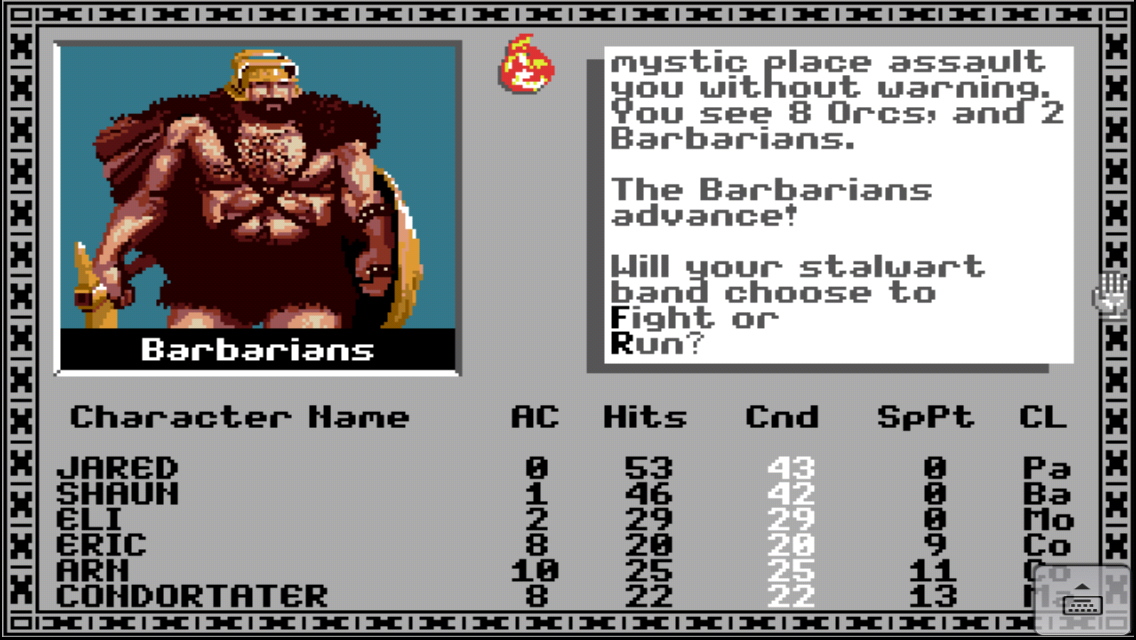
This version of the game is the Apple IIGS version, emulated in a very barebones way. That particular version is, in my opinion, the best version of the game, so at least up to that step, we’re doing fine. While the game allows you to do most basic functions with the mouse, you’re going to have to use a keyboard pretty frequently. The mouse actions are easy enough to map to touch controls, but for the keyboard commands, the game simply offers up iOS’s software keyboard. Opening the keyboard takes up half of the screen, making the play area even smaller than it already is. You can close the keyboard whenever you like and the game will stretch out to fill the screen, but it’s just not practical to play this way. At first, I felt a bit silly playing a game with a big old software keyboard, in a smaller-than-a-postage-stamp-sized window, but after a while, I got used to it. The biggest problem is that you need to access the letters and numbers pretty often, so you’re always having to tap that alpha/number button. I think this version of the game still looks and sounds really nice. As an added bonus, you can access a variety of maps, tips, and walkthroughs at the touch of a button. Just remember to pause the game with the ESC key first.
I had what I can only call an educational experience replaying The Bard’s Tale for the first time in a post-Fresh Prince world. Sometimes it was frustrating, sometimes it was exciting, and as the game wore on, it became a bit dull as my characters started getting overpowered. Now, personally, I’m okay with an experience that isn’t necessarily a fun time all the way through if I can get something else out of it, and I feel like I did here. It’s a 29 year old game that definitely feels its age, but if you can adapt your brain to it, it’s still a fairly compelling adventure. Still, I suspect those of you with good memories of the game are probably better off leaving them as they are, and those who haven’t played it before are going to have a very hard time trying to see the good points over the bizarre balance curve and poor mobile interface. So with that in mind, unless you have a serious interest in the genre’s past, I can’t really recommend this RPG for a reload.
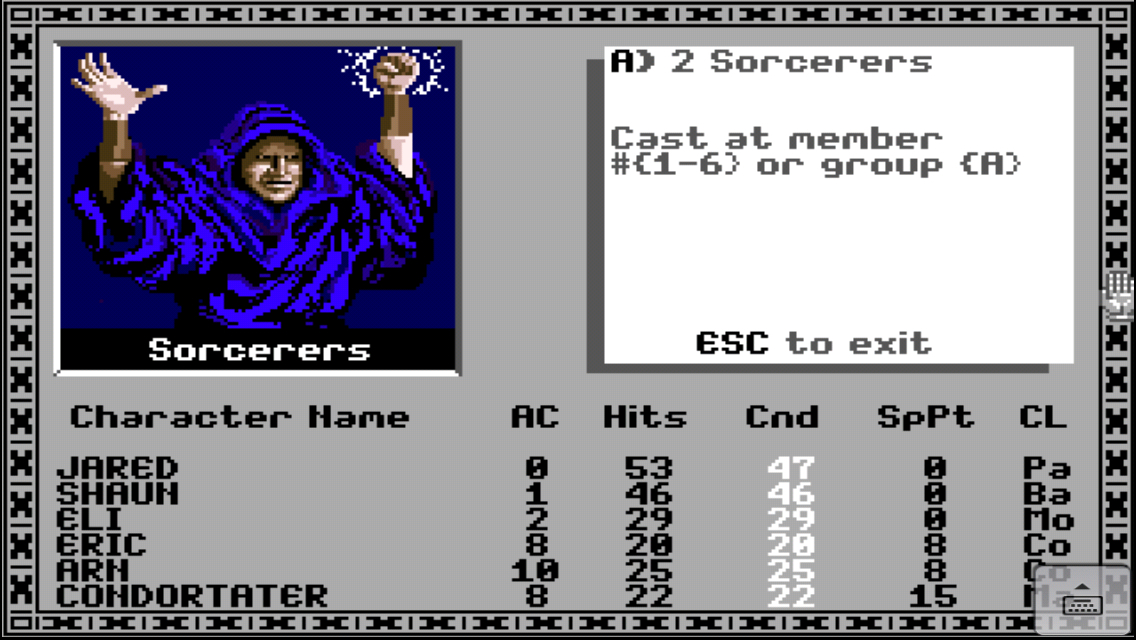
That’s just my take, though, and I’m interested to hear what you have to say about it. Please leave your comments below or swing by the Official RPG Reload Club on our forums to speak your mind. You can also vote on the next Reader’s Choice RPG Reload, which will take place in RPG Reload File 008. Next week’s game, as selected by you, is The Quest Gold. It’s a pretty big one, so I’ve got my work cut out for me. I hope you all take a chance to play along with me, because even though most of these are single-player games, they’re still more fun with friends. Thanks for reading!
Next Week’s Reload Hint: No hint needed, you asked for it!
